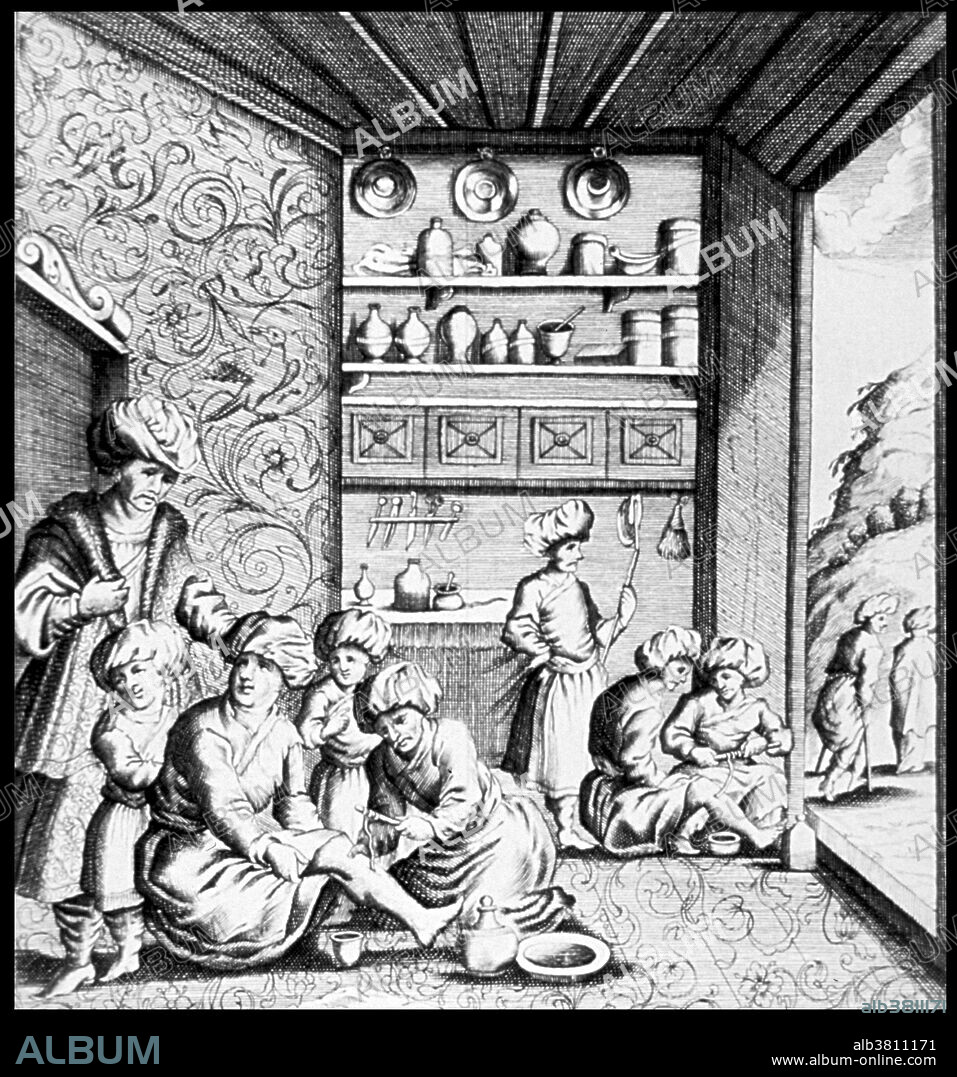alb3811171
Guinea Worm Extraction, 1674

|
Zu einem anderen Lightbox hinzufügen |
|
Zu einem anderen Lightbox hinzufügen |



Haben Sie bereits ein Konto? Anmelden
Sie haben kein Konto? Registrieren
Dieses Bild kaufen.
Nutzung auswählen:

Titel:
Guinea Worm Extraction, 1674
Untertitel:
Siehe automatische Übersetzung
Patients are having nematodes removed from their legs. Dracunculus medinensis (Guinea worm) is a nematode that causes dracunculiasis, also known as guinea worm disease. The disease is caused by the female which, at up to 31 inches in length, is among the longest nematodes infecting humans. The most common method for removing the worm involves submerging the affected body part in water to coax the worm out. The site is then cleaned thoroughly. Slight pressure is applied to the worm as it is slowly pulled out of the wound. Full extraction of the female guinea worm usually takes several days. After each day's worth of extraction, the exposed portion of the worm is wrapped around a piece of rolled-up gauze or small stick to maintain tension. This method of wrapping the worm around a stick or gauze is speculated to be the source for the Rod of Asclepius, the symbol of medicine. Engraving appeared in "Exercitatio de vena medinensi, ad mentem Ebnsinae; sive, De dracunculis veterum", 1674.
Bildnachweis:
Album / NLM/Science Source
Freigaben (Releases):
Bildgröße:
3643 x 3900 px | 40.6 MB
Druckgröße:
30.8 x 33.0 cm | 12.1 x 13.0 in (300 dpi)
Schlüsselwörter:
ABSETZUNG • ARABISCH • AUTOPSIE • ENTFERNEN • ILLUSTRATION • ILLUSTRATIONS • ISLAMISCH • MANN • MOSLEM (MUSLIM) • RAEUMUNG • RÄUMUNG • SEKTION
 Pinterest
Pinterest Twitter
Twitter Facebook
Facebook Link kopieren
Link kopieren Email
Email
